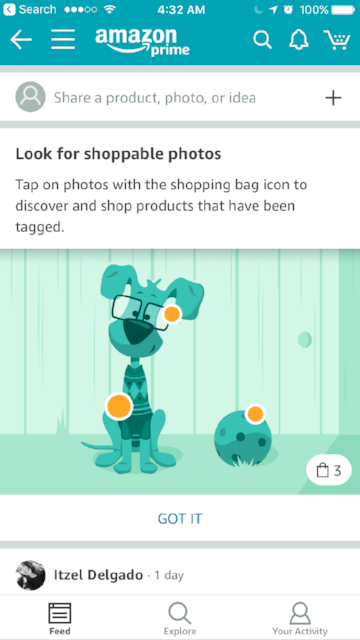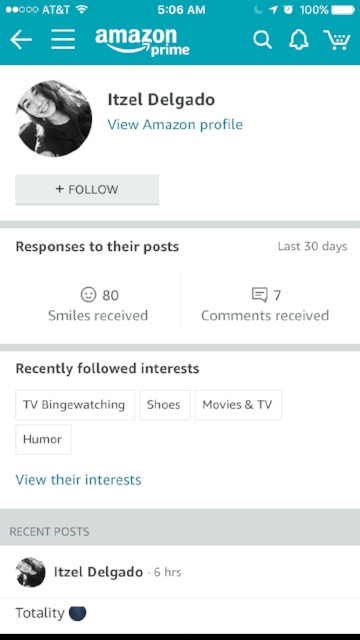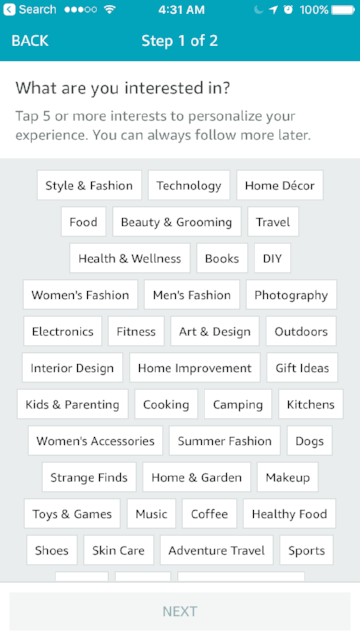Amazon Spark, released last month, is a feed of user-posed images. Similar to Instagram, Spark’s main difference is it’s inherent and seamless shopping capabilities. Any image posted to Spark can be easily tagged with products that, with a single tap, show links to all tagged products which can then be quickly added to a cart or purchased with one click.
No leaving the Amazon app, barely a disruption in the flow, natural product placement--it’s genius. But will people use it? And can your brand take advantage?
As of right now, we can only answer those two questions with a “maybe” and “sort of.” Let’s dive into five things you should know about Amazon Spark now to determine if and how you can use it.
1. Prime Members Only (For Now)
Spark activity (meaning posting and commenting) is exclusive to people with an Amazon Prime membership and a “minimum amount” of purchases, but any user can view the content. While this does limit user adoption, it ensures an active and engaged user base with some seemingly disposable income. Prime members spend nearly double that of non-Prime members.
At this time, merchants are unable to create official profiles on Spark. If you really wanted to use it, you could create a personal account like we used to do in the old days of Facebook and Instagram (and buy some stuff, although it’s not clear what that minimum is). If Amazon follows the lead of these other social networks, brand accounts won’t be too far in the future. But they may also learn from these social networks, and keep it personal to protect the integrity of the feed.
2. Smile = Like
Users can engage with photos in two ways--by tapping once to “Smile” or by leaving a comment.
Users can also follow interest categories, such as Health & Beauty, Women’s Fashion, Cooking, Dogs, Music, or Adventure Travel, and people to curate their own feeds.
3. Enthusiasts = Influencers
Amazon is calling anyone that contributes to Spark an “enthusiast.” These Enthusiasts receive badges as a reward for posting or writing reviews. It seems Amazon is moving away from “Top Reviewers” in favor of Enthusiasts on Spark.
It’s these Enthusiasts that present the biggest opportunity for merchants on Spark today. These are the people that can help to share your products and drive purchases, since you cannot (officially) create a profile and post. Engage with the people that review your products now as they’re more likely to embrace Spark.
4. Comparison Polls
Users can run comparison polls between two Amazon products to get feedback on which product to buy. If you’re able to find which other products your products are being compared to (more on this below), you can gain a lot of insight into your top competitors on the platform and what consumers are saying about you.
5. No Tracking & Monitoring Tools (Yet)
Personal users can see smiles and comments received, but Amazon hasn’t provided any tracking or monitoring tools for merchants yet. And none of the third-party tools include Spark yet or maybe ever if Amazon decides not to allow it.
Right now, your best option is to monitor the platform manually. Use the “Explore” section to search for your brand and products, and follow related topics and people.
Amazon may be new to the social media game, but they’re old hat at ecommerce, giving them a major leg up in the world of social shopping. It’s wise to keep an eye on Spark to learn if/how it takes off, and how your products and industry are being talked about now.





